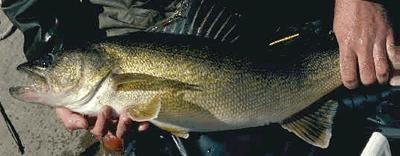Gandhi N, RWK Tang, SP Bhavsar, GB Arhonditsis. 2014. Fish mercury levels appear to be increasing lately: a report from 40 years of monitoring in the Province of Ontario, Canada. Environmental Science and Technology.
Mercury levels in fish are on the rise in some locations after years of decline in Ontario lakes, according to researchers. While the scientists found an overall drop in mercury since the 1970s, levels are creeping back up at more than half of locations sampled, especially in Ontario’s most northern lakes. Because the province covers a wide geographical area that contains about one-third of the world’s fresh water, the findings, they say, may reflect changes on a large scale.
Mercury levels in fish are on the rise in some locations after years of decline in Ontario lakes, according to researchers from the University of Toronto.
While the researchers found an overall drop in mercury since the 1970s, levels are creeping back up at more than half of locations sampled, especially in Ontario’s most northern lakes.
“Our analysis indicates that trends in mercury levels in Ontario fish switched from declining to generally increasing during the late 1990s through 2012,” wrote the study authors.
Because the province covers a wide geographical area that contains about one-third of the world’s fresh water, the findings, they say, may reflect changes on a large scale.
Fish are a major source of mercury exposure worldwide. Studies have found that children exposed in the womb have reduced IQs and other neurological effects. Mercury also has been linked to heart disease in adults.
The researchers collected data on more than 200,000 fish collected by the Ontario Ministry of the Environment over the past 40 years. The samples included fillets from game fish from nearly 3,000 locations.
Mercury levels in the fish declined at 47 to 62 percent of the locations sampled between the 1970s and 2012, mirroring trends measured at 90 U.S. locations. However, the percentage of locations showing a flat or increasing trend for mercury in walleye increased from 29 percent in the 1970s and 1980s to 59 percent between 1995 and 2012. During that same period, the locations showing increasing mercury for pike rose from 44 percent to 73 percent.
The researchers also found an increase in places with fish containing more than .61 micrograms of mercury per gram – the level at which the Ontario Ministry of the Environment advises against eating more than four fish meals per month from a given area. (The advisory level for pregnant women and children is much lower.)
In Canada, mercury air emissions dropped 90 percent between 1970 and 2012, due largely to tighter standards for coal-fired power plants and other sources.
It’s not clear why mercury levels in fish are on the rise, while emissions are down. Similar upwards trends have been seen in some lakes in Minnesota and parts of the Great Lakes.
“Other factors, such as global emissions, climate change and invasive species are likely affecting the response,” wrote the researchers.
Asia’s mercury emissions doubled between 1990 and 2005, largely from coal-burning power plants. Some estimates suggest that more than 40 percent of the mercury deposited on Canadian land and lakes comes from China, alone.
Canada’s weather also has been warmer over the past 60 years. Warmer lakes make mercury more mobile and accelerate the rate that fish accumulate mercury. Mercury levels in fish in northern Ontario lakes were increasing at a greater rate than levels in southern Ontario fish.
These trends “suggest a mixed positive/negative outlook for the North American environmental mercury problem,” the researchers concluded.
This synopsis was originally written and posted by Brian Bienkowski, a contributing writer for www.environmentalhealthnews.org. Please visit their website for the original synopsis or more information.



